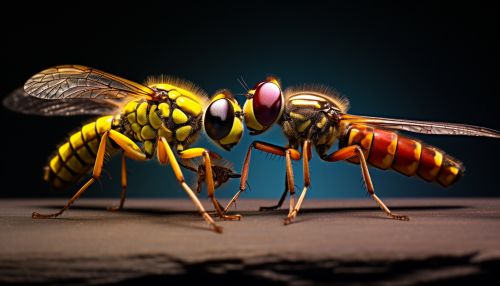Batesian mimicry
Overview
Batesian mimicry is a form of mimicry where a harmless species has evolved to imitate the warning signals of a harmful species directed at a predator of them both. It is named after the English naturalist Henry Walter Bates, who first described it in 1862.


Evolutionary Basis
The evolutionary process that leads to Batesian mimicry is driven by the survival advantage gained by the mimic. The harmful species, often called the model, has a characteristic warning signal – such as bright colours, a distinctive pattern, or a particular behaviour – that predators learn to associate with a negative experience, such as a bad taste, a painful sting, or a foul smell. The harmless mimic species then evolves to resemble the model, thereby gaining a degree of protection from predation.
Mechanisms
The mechanisms of Batesian mimicry are complex and multifaceted. They involve a range of biological processes, from the genetic mutations that produce mimicry traits, to the behavioural adaptations that allow predators to learn and avoid harmful prey.
Examples
There are numerous examples of Batesian mimicry in nature, spanning a wide range of species and ecosystems. These include insects, birds, reptiles, and even mammals.
Implications
The study of Batesian mimicry has wide-ranging implications, from understanding the dynamics of predator-prey interactions, to providing insights into the process of natural selection and evolution.
